

Marvel Comics Presents ran for 175 issues from 1988 until 1995. Each issue included four eight-page stories with typically two or three on-going features (and no ads). It spotlighted some of the leading creators of mainstream comics over a period of precipitous economic growth and even more rapid decline. Reading through it is an opportunity to revisit any number of weird aspects of 90s superhero comics. This blog is a primitive, oddly regimented, manifestly scattershot crawl through an often disappointing but occasionally splendid comic. All image copyrights are Marvel's. Issue credits linked below. Updated on Wednesdays.
Marvel Comics Presents #20: Really Late May 1989(2.05.20)
Credits: grandcomicsdatabase
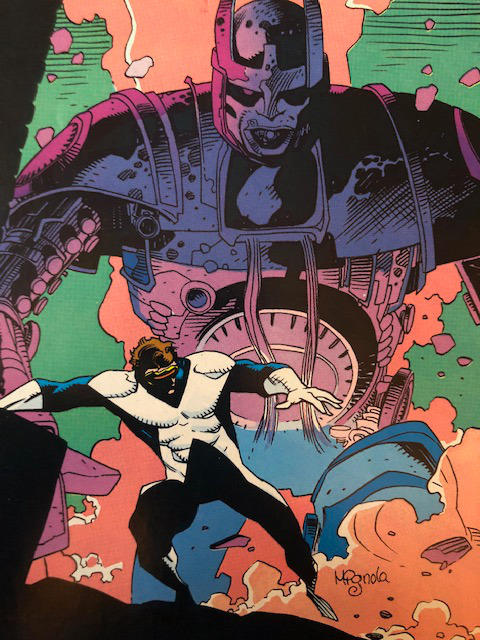
Mike Mignola's trademark "focal character, floating in space of occult accoutrements" isn't fully realized here and it's likely for the better, since the result is a remarkably dimensional piece, depicting a towering Master Mold and a withering Cyclops. The pinks and purples are a splendid touch and far outshine the back cover, which, again, anticipates the decades of artful Hellboy cover work.
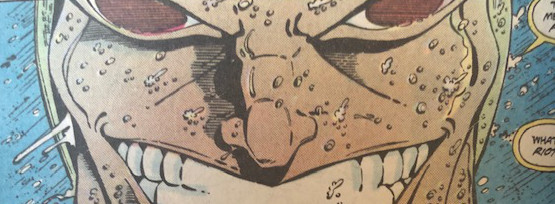
A. Cyclops, "The Retribution Affair" [4/8]
Lim and Patterson's considerable success begins to come apart from some awkward story and scripting choice by Harras. Along with a splash teeming with alien servitors and the continued strength of distinctive textures for Master Mold, Lim packs this installment with intra-panel action; sometimes with motion lines or softer textures, but there's an intelligible, frantic air to the action that's emerging along with some strong detail work.
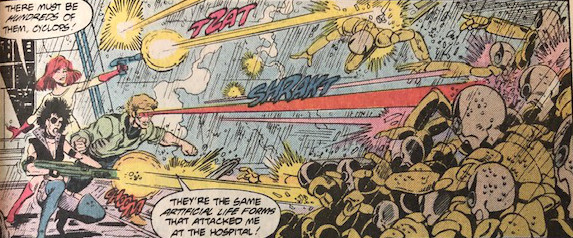
Regrettably, this work runs headlong into weird scripting with the ex nihilo appearance of two new characters--Conscience and Callisto. The former's dialogue also proves distractingly creaky. There are clear miscalculations afoot, but, thankfully, it's easy on the eyes.
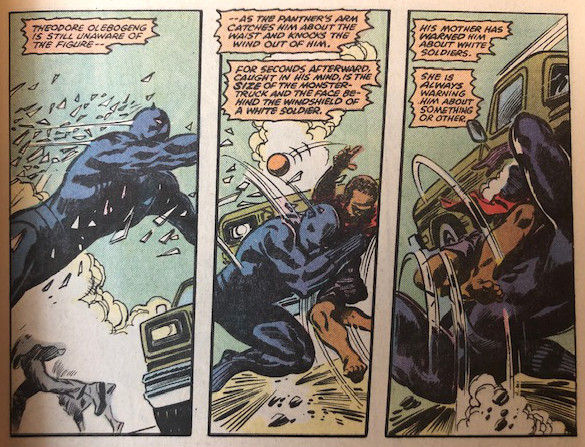
B. Black Panther, "Panther's Quest" [8/25]
An interesting temporal exercise. This installment is exceptionally heavy on diegetic narration to the point that five pages have no genuinely substantial dialogue, but the scene unfolds over the course of approximately a minute. McGregor builds out a micro-narrative for a young boy almost run down by the South African soldiers and then traces the contours of his experience of rescue by T'Challa while, in the same moment, narrating forwards through the life-long trauma that attends his experience. Colan moves our viewpoint liberally here, but, given the costuming, Tom Palmer is carrying an especially heavy load when it comes to conveying the posture and structure of T'Challa's dense movements.
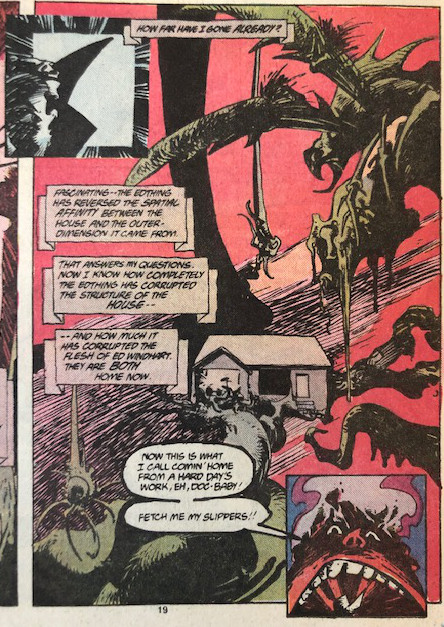
C. Doctor Strange, "Nightmare in Suburbia" [2/2]
Badger dedicates this second and concluding installment to mystical dust-up between Strange and a possessed suburban husband. The broader narrative is thin, but the script here is taut and nicely informs the contorted and abstract action. Badger is light on a general visual logic, but there still a coherent visual core here that's helped along by subtle hints in color and form language.
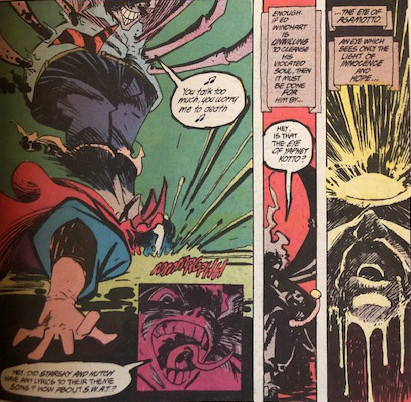
Looking backwards at the magical realms Strange works within, it's clear that Badger's peeling back the plasticity and glossiness of Ditko's work. Instead, he packs it with a genuine feeling of corrosion and grossness. There's some crafty layout work, too, with Badger inserting smaller inset detail panels to fill out the stripped down action scene.

D. Clea, "At the Bottom of My Garden"
An interesting counterpoint to the preceding feature, since each features Ditko's "dark dimension." But, where Badger infuses his panels with chaotic forms, Lim takes the less successful though totally understandable way out: he clearly and cleanly renders the constructions that Ditko and others after him have drawn up. The effect is peculiar, bringing Clea into weirdly sharp focus and, while Lim can be commended for doing double-duty in drawing two features in this issue, it's enough material to get in trouble--for example, there's no real distinction between Clea's face and Moira McTaggert's. The story here, from Peter Gillis, has something to do with Clea fighting a dragon to discover a flower hidden in Dormammu's garden. It's either flatly pointless or pointlessly flat. Take your pick.
Power Ranking: Doctor Strange (A), Black Panther (B-), Cyclops (C), Clea (C-)